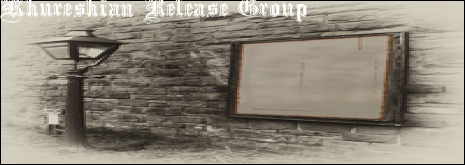TGC - Era of the Crusades - (vonG)
- CategoryOther
- TypeTutorials
- LanguageEnglish
- Total size506.9 MB
- Uploaded ByOctaviusvon
- Downloads167
- Last checkedJun. 15th '18
- Date uploadedJul. 25th '17
- Seeders 0
- Leechers0

The Crusades have been hailed as the driving force that brought Western Europe out of the Middle Ages—and condemned as the beginning of European imperialism in the Muslim Near East. But what really were the Crusades? What were the forces that led to one of history's most protracted and legendary periods of conflict? How did they affect the three great civilizations that participated in them? And, ultimately, why did they end and what did they accomplish?
A Crucial Chapter in the Story of Western Civilization
In The Era of the Crusades, Professor Kenneth W. Harl looks at the "big picture" of the Crusades as an ongoing period of conflict involving Western Christendom (we would now call it Western Europe), the Byzantine Empire, and the Muslim world. From this perspective, you will study the complex but absorbing causes of the Crusades, which include the many political, cultural, and economic changes in Western Europe after the fall of the Roman Empire.
In addition, Professor Harl presents the Crusades in terms of the specific military campaigns—the eight "canonical" Crusades that took place from 1095–1291—proclaimed to retake Jerusalem and the Holy Land from Muslim hands and return them to Christendom. You will consider the immediate circumstances—the leaders, purposes, key battles, and degrees of success or failure—surrounding these often-monumental expeditions (they could number as many as 100,000 soldiers and religious pilgrims).
This course is an opportunity to appreciate fully how Western Civilization changed in many profound ways during the Crusading era. You will understand how the Byzantine Empire collapsed; how Western Europe began its rise to global political, economic, and cultural power; and how the Middle East became a majority Muslim world.
You will also explore a wide variety of misperceptions and long-debated questions about the Crusades. Did the popes preach the Crusades as a way to increase their personal power and authority? Were the Crusader armies made up of zealous and brutal religious fanatics or of highly disciplined soldiers—heirs to a sophisticated Western European military tradition? Why did the members of the Fourth Crusade decide to sack Constantinople, turning the Crusades from Christian against "infidel" to Christian against Christian?
An Era of Adventure, Chivalry, and Legend
This three-part, 36-lecture course is as sweeping in scope as were the Crusades themselves. Professor Harl delves into fascinating aspects of history, all related to the Crusades, that make each lecture a new adventure. These include advances in shipbuilding that were spurred by the Crusades, the types of weapons and military tactics used in battle, and the legend of "Prester John," a mysterious eastern king with whom the popes hoped to form an alliance against the Muslims.
You will appreciate the opulence of the "Queen of Cities," the Byzantine capital of Constantinople, a city that conveyed a sense of awe-inspiring ceremony and splendor to the Crusaders and other visitors. Attending Mass in the city's cathedral, the Hagia Sophia (now a mosque), was said to be so stirring that a number of Russians converted to Christianity out of the simple conviction that God must dwell in such a magnificent church.
You will examine the organization and purpose of the Hospitallers and the Templars: the Knights of the Hospital and the Knights of the Temple. These "soldiers for Christ," a unique mixture of clergy and warrior, played an instrumental role in defending the Holy Land and in operating its banking system.
What makes the Crusades so attractive to study is that they are like a great novel. This is a time in history that is the source of many of our notions of adventure and chivalry and that is peopled with colorful and renowned figures. Those you will meet include:
Odo of Bayeux, a churchman who fought in the Crusades but still maintained his beliefs against shedding blood. Instead of a sword, he used a mace to simply hit his opponents in the head and give them a concussion.
Louis VII of France, the pious and monkish king who slept on a bare stone floor, worried constantly about his sins, and viewed the Second Crusade as a means to personal redemption.
Eleanor of Aquitane, one of the most brilliant and engaging women in history, whose adventuresome nature led her to join the Second Crusade, accompanied by a personal court that included maidens dressed as Amazons.
Saladin, the great Kurdish-Muslim conqueror whose victory at the Battle of Hattin in 1187 ended the Crusader Kingdom of Jerusalem. Through his gallantry and generosity toward his enemies, Saladin, a Muslim, ironically came to be seen as the epitome of Christian chivalry.
Richard the Lion-hearted, the son of Eleanor of Aquitane and heir to a family tradition of participation in Crusades. Considered "the perfect knight," handsome and with a fondness for gambling, jousting, and tournaments, Richard fought Saladin to a stalemate in a relationship of mutual respect and admiration. 
Files:
TGC - Era of the Crusades- 01 Era of the Crusades, Part 1.m4b (327.7 MB)
- 02 Era of the Crusades, Part 2.m4b (174.5 MB)
- 390---packaging_flat_4.1416879127.jpg (53.1 KB)
- Era of the Crusades.pdf (4.6 MB)
Code:
- udp://tracker.leechers-paradise.org:6969/announce
- udp://tracker.coppersurfer.tk:6969/announce
- udp://tracker.opentrackr.org:1337/announce
- udp://tracker.zer0day.to:1337/announce
- udp://eddie4.nl:6969/announce
